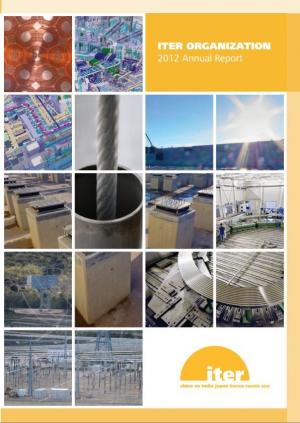Extra! Extra! Read all about it!
26 Aug 2013
-
ITER Communication
New reports from the Domestic Agencies are included on pages 40-48 of the 2012 ITER Organization Annual Report.
It's that time of year again. With the last days of August upon us and a busy September just around the corner, it's a good time to stop and take measure of the evolution of the ITER Organization. The 2012 ITER Organization Annual Report, just released, recounts one year in the life of the ITER Project—the highlights in every technical department, the organizational challenges faced (and the solutions set into motion), and milestones in construction and manufacturing.
In 2012, the ITER project entered the third year of its Construction Phase. The ground support structure and seismic isolation system for the future Tokamak Complex was completed, work began on the site of the Assembly Building, the ITER site was connected to the French electrical grid, and part of the ITER team—approximately 500 people—moved into the completed Headquarters building.
The year 2012 was also witness to the accomplishment of a major licensing milestone when, in November, ITER became the world's first fusion device to obtain nuclear licensing.
The project made a definitive shift in 2012 from design work and process qualification to concrete manufacturing and production. To match this important evolution, the 2012 Annual Report introduces a new feature—the last pages of the report (pp. 40-48) are now reserved for reports from the Domestic Agencies. How is the procurement of ITER systems divided among the Domestic Agencies? Where are activities for ITER taking place in each Member? What percentage of work has been signed over by the ITER Organization in the form of Procurement Arrangements? And, finally: What major manufacturing milestones were accomplished in 2012?
The ITER Organization 2012 Annual Report and 2012 Financial Statements are available online at ITER's Publication Centre.


